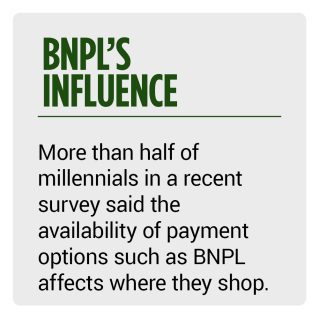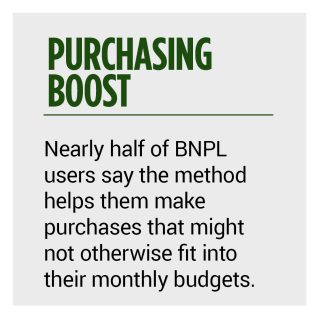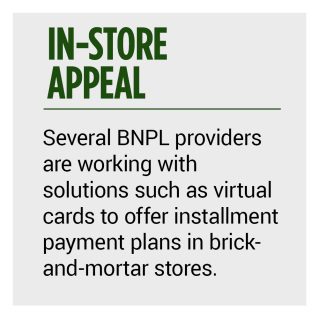Jane.com Uses BNPL to Meet and Bolster Ties With Millennials, Gen Z Consumers

Buy now, pay later (BNPL) has become significantly more prominent during the accelerated digital transformation accompanying the pandemic. More and more consumers completing transactions via the web or mobile checkouts have become increasingly familiar with installment payment options, and as they chart their returns to physical retail, they are taking their new preferences with them.
Merchants find that BNPL is especially appealing to millennial and Generation Z consumers, many of whom are less likely to have the disposable income that older generations do. A significant share of these younger consumers are also wary of credit card spending and the continuing cost of interest and revolving debt, making installment payments a key differentiator for merchants looking to engage and retain them.
The February edition of the “Buy Now, Pay Later Tracker®” examines the expansion of BNPL payment options into grocery and restaurants, as well as in brick-and-mortar sales. It also looks at how financial institutions (FIs) can get a leg up on the competition by creating their own BNPL option, and how millennial and Generation Z consumers are using BNPL instead of possibly costly credit cards payments.
Around the Buy Now, Pay Later Space
BNPL providers are moving into the food and beverage space, with Australia-based providers Zip and Afterpay leading the way both at home and in the United States. The offerings are more mature in Australia than those available in the U.S., where the concept of using BNPL to pay for dining out and groceries is still somewhat controversial. The providers both feature options through their web portals, and other providers have begun providing users cards that can be used to make purchases at brick-and-mortar stores that do not offer BNPL options.
 While BNPL is gaining ground, many FIs are losing out on the developing opportunity, which is a direct competitor to their own financial services products. BNPL spending is expected to triple by 2026 to $995 billion, as the appeal of making credit-based purchases with predictable monthly payments and no interest continues to grow. Regardless of that growth, legacy FIs have been slow to develop their own BNPL products or BNPL-related partnerships. Many do not even have strategies for how to approach BNPL. This is despite the fact that FIs are well-positioned for entering the BNPL space, given their longstanding experience and expertise in navigating emerging regulations and mitigating risk associated with credit products.
While BNPL is gaining ground, many FIs are losing out on the developing opportunity, which is a direct competitor to their own financial services products. BNPL spending is expected to triple by 2026 to $995 billion, as the appeal of making credit-based purchases with predictable monthly payments and no interest continues to grow. Regardless of that growth, legacy FIs have been slow to develop their own BNPL products or BNPL-related partnerships. Many do not even have strategies for how to approach BNPL. This is despite the fact that FIs are well-positioned for entering the BNPL space, given their longstanding experience and expertise in navigating emerging regulations and mitigating risk associated with credit products.
For more on these stories and other buy now, pay later developments, check out the Tracker’s News and Trends section.
Jane.com Talks About BNPL and Appealing to Younger Consumers
Since launching a BNPL option in March 2020, clothing and décor retailer Jane.com has seen current BNPL use that is approximately double what it was in the first three months.
In this month’s feature story, Mark Spencer, senior vice president of commercial operations at clothing and decor retailer Jane.com, talks about how BNPL has led to larger carts for those purchases and generates stronger consumer engagement through return shoppers.
PYMNTS Intelligence: BNPL Gives Younger Consumers Flexible Buying Power
With growing interest in budgeting and value, U.S. consumers were primed for BNPL when they began to encounter it more frequently in online shopping carts. The growth of BNPL also accompanies an overall increase in the number of payment options available and consumer awareness that they have choices. For 37% of BNPL users, the payment plans allow them to avoid credit card interest, and 45% of BNPL users said they would not fit those purchases into their monthly budgets without the product.
This month’s PYMNTS Intelligence looks at how younger consumers, in particular, are using BNPL to increase their buying power in a way that still fits their budgets and makes sense for their lifestyles.
About the Tracker
The “Buy Now, Pay Later Tracker®” examines the latest trends and developments shaping the buy now, pay later space and why it appeals to demographics who, for one reason or another, are less inclined to turn to other credit products.

